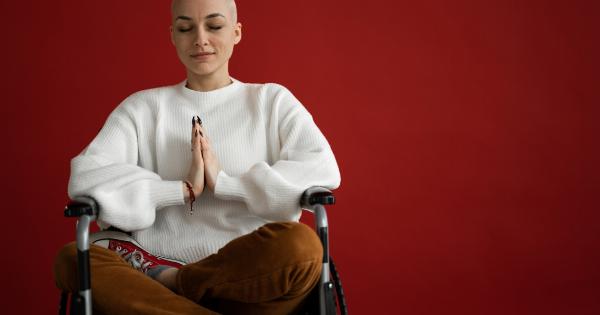Cancer is a devastating disease that affects millions of people around the world. While there are numerous types of cancer, one that often goes overlooked is lymphoma.
September 15th is recognized as World Lymphoma Day, a day dedicated to raising awareness about this particular form of cancer and the ongoing fight against it.
Understanding Lymphoma
Lymphoma is a type of cancer that affects the lymphatic system, which is a vital part of the body’s immune system. The lymphatic system consists of lymph nodes, lymph vessels, and lymphocytes (a type of white blood cell).
Lymphoma occurs when abnormal lymphocytes divide and multiply uncontrollably, forming tumors in various parts of the body, including the lymph nodes, bone marrow, spleen, and other organs.
There are two main types of lymphoma: Hodgkin lymphoma (HL) and non-Hodgkin lymphoma (NHL).
Hodgkin lymphoma usually involves the presence of a specific type of abnormal cell called Reed-Sternberg cells, while non-Hodgkin lymphoma comprises a wide spectrum of lymphomas that do not have these cells. Both HL and NHL are serious diseases that require prompt diagnosis and treatment.
The Importance of World Lymphoma Day
World Lymphoma Day is an initiative created to educate the public about the signs and symptoms of lymphoma, promote early detection, and provide support to those affected by the disease.
The day also helps raise funds for research aimed at improving treatment options and finding a cure.
By raising awareness about lymphoma, World Lymphoma Day plays a crucial role in dispelling myths and misconceptions about the disease.
Many people are unfamiliar with lymphoma, leading to delayed diagnosis and, consequently, reduced chances of successful treatment. The day serves as a reminder that lymphoma is a real and significant threat to individuals of all ages, and early detection can greatly improve survival rates.
The Signs and Symptoms of Lymphoma
Recognizing the signs and symptoms of lymphoma is essential for early detection. While symptoms may vary depending on the type and stage of lymphoma, some common indicators include:.
- Swollen lymph nodes
- Unexplained fever
- Night sweats
- Unintentional weight loss
- Constant fatigue
- Itching and skin rash
- Shortness of breath
- Enlarged spleen
If you experience any of these symptoms for an extended period, it’s crucial to consult a healthcare professional for further evaluation and diagnosis.
Diagnosis and Treatment Options
Once lymphoma is suspected, a variety of diagnostic tests may be performed to confirm the diagnosis and determine the type and stage of the disease.
These tests can include physical examinations, blood work, imaging studies (such as CT scans or PET scans), and biopsies of affected tissue or lymph nodes.
Treatment options for lymphoma depend on several factors, including the type, stage, and overall health of the individual. Common treatment methods include chemotherapy, radiation therapy, immunotherapy, targeted therapy, and stem cell transplantation.
In certain cases, a combination of these treatments may be recommended.
Support and Resources
A cancer diagnosis can be overwhelming, not just for the patient but also for their loved ones. Fortunately, there are numerous organizations and support groups available to provide assistance and resources throughout the journey.
Some notable organizations include the Lymphoma Research Foundation, the Leukemia and Lymphoma Society, and the Lymphoma Coalition.
These organizations offer emotional support, educational materials, financial assistance, and access to clinical trials.
Additionally, online communities and forums provide individuals with the opportunity to connect with others who are going through similar experiences, creating a sense of belonging and encouragement.
Prevention and Awareness Efforts
While there is no guaranteed way to prevent lymphoma, there are certain lifestyle choices that may reduce the risk of developing the disease. These include:.
- Maintaining a healthy weight
- Eating a balanced diet rich in fruits and vegetables
- Exercising regularly
- Avoiding exposure to toxins and chemicals
- Protecting yourself from infections
Furthermore, regular check-ups and screenings can help detect lymphoma early on, increasing the chances of successful treatment.
The Global Impact
Lymphoma affects people of all ages and backgrounds worldwide. According to the American Cancer Society, an estimated 83,100 new cases of non-Hodgkin lymphoma and 8,480 new cases of Hodgkin lymphoma will be diagnosed in the United States in 2021 alone.
However, lymphoma goes beyond borders, and its impact is felt globally.
World Lymphoma Day serves as a reminder that we need to join forces, regardless of nationality or geographical location, to raise awareness, support patients, and advocate for better treatment options and funding for research.
Becoming an Advocate
As individuals, we have the power to make a difference. By spreading the word about World Lymphoma Day, we can help raise awareness and educate others about this often-overlooked type of cancer.
Whether it’s through social media, community events, or simply talking to friends and family, every effort counts.
In addition to raising awareness, consider supporting organizations focused on lymphoma research and patient support.
Donating funds, participating in fundraising events, or volunteering your time can all contribute to the ongoing fight against lymphoma.
Conclusion
World Lymphoma Day serves as a call to action, urging individuals worldwide to come together in the fight against lymphoma.
Through increased awareness, early detection, and ongoing support, we can make a difference in the lives of those affected by this formidable disease. Join the movement and help spread the word – together, we can increase survival rates and work towards a future without lymphoma.





























